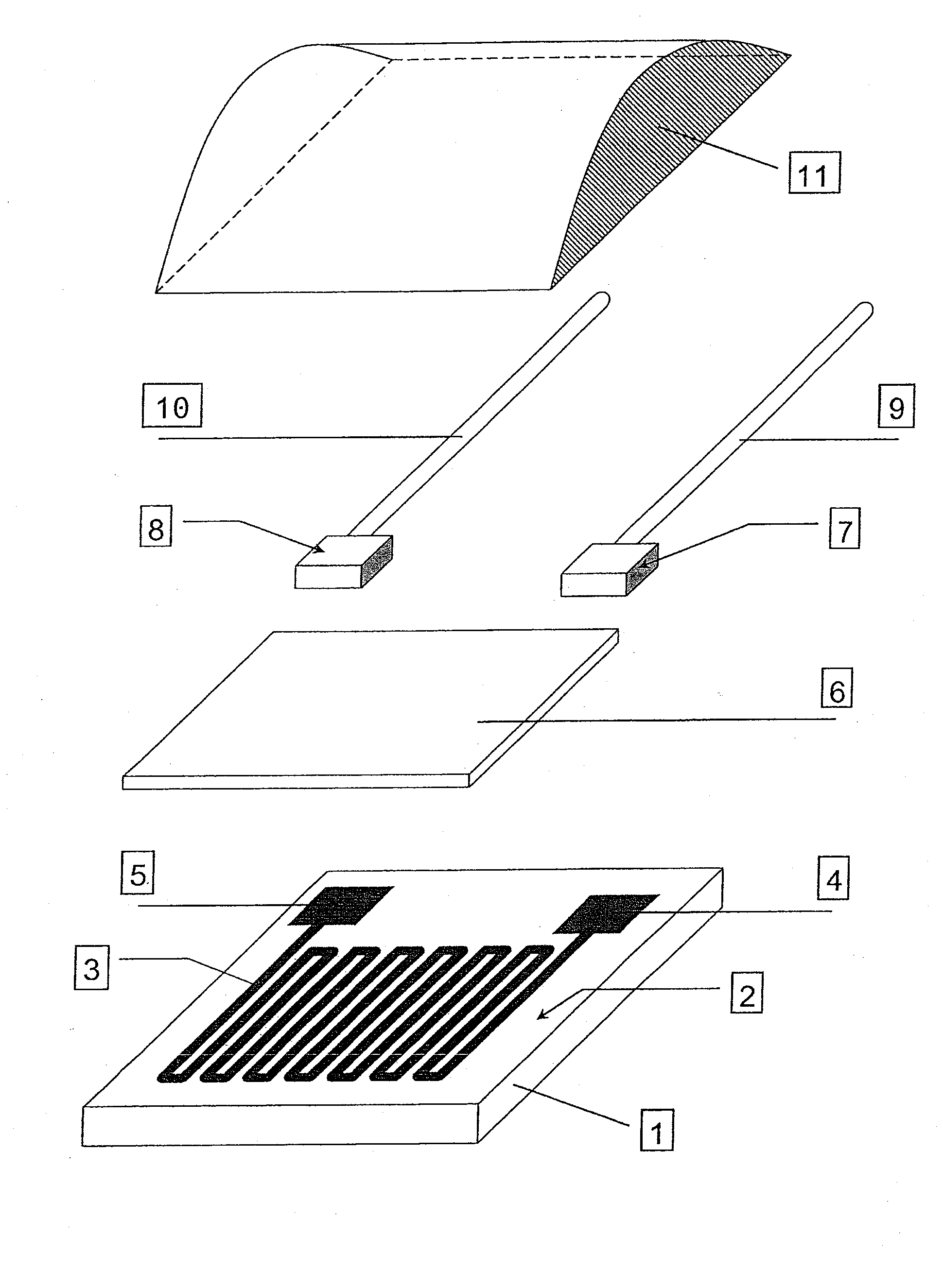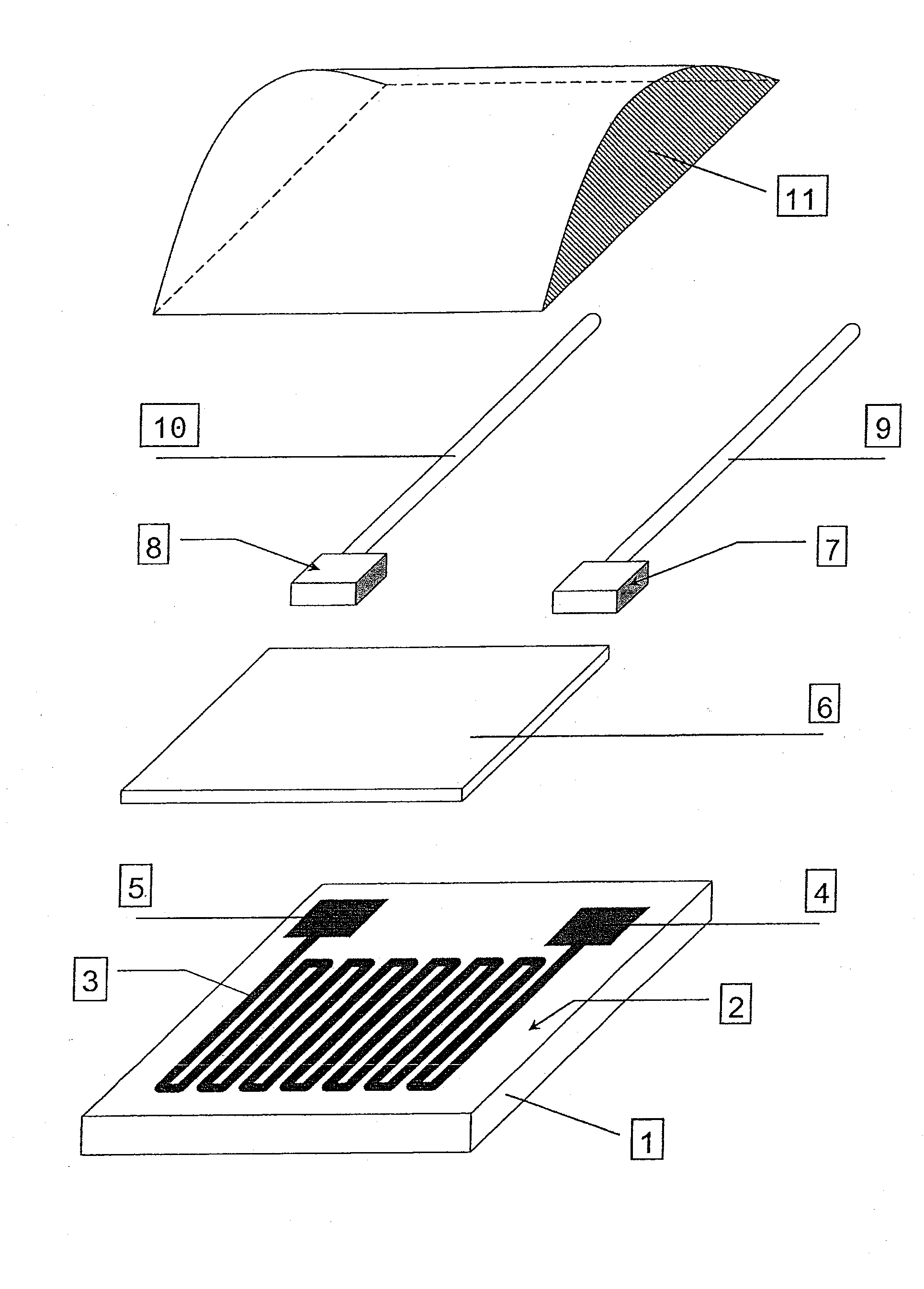Non-conducting zirconium dioxide
a non-conducting, zirconium dioxide technology, applied in the direction of material resistance, heat measurement, instruments, etc., can solve the problems of low fracture strength and open pore structure of magnesium titanate, and achieve the effects of improving yield in production, improving reproducibility, and maintaining long-term stability
- Summary
- Abstract
- Description
- Claims
- Application Information
AI Technical Summary
Benefits of technology
Problems solved by technology
Method used
Image
Examples
embodiment 1
[0021]FIG. 1 shows a measuring resistor, in which the resistance layer 3 is deposited directly on the surface 2 of an electrically insulating substrate 1. As the substrate 1, a block-shaped body made of yttrium and tantalum-stabilized zirconium dioxide (ZYTa) is used. For the complete stabilization of the zirconium dioxide, 16 mol % Y and 16 mol.% Ta are added. The production of the substrate 1 is performed by foil casting with subsequent sintering at 1500° C. As a result, 97% of the theoretical density and a fracture strength of 260 MPa are achieved, so that substrate fracture in the production process of the measuring resistor according to FIG. 1 is practically excluded. The thermal expansion coefficient of the substrate 1 lies in the range of 9.0 to 11.0×10−6 / ° K.
[0022]On the surface 2 of the substrate 1 the resistance layer 3 made of a platinum-group metal, preferably platinum, is deposited by sputtering. The resistance layer 3 preferably has the shape of a meander. The surface ...
embodiment 2
[0025]A sapphire substrate having a 5 nm-thick platinum layer is coated with 2 nm gold. In this layer thickness, gold is no longer a homogeneous layer, but instead is coated inhomogeneously on the platinum layer with a theoretical average layer thickness of 2 nm. The gold layer is the deciding factor for the conductivity and thus also the surroundings of the gold layer. This gold layer features especially high sensitivity with respect to organic molecules on its side opposite the platinum layer. In one preferred construction, another layer is deposited on the gold layer, in particular made of organic molecules, which improves the sensitivity due to interaction with other substances. In this way, on the one hand, the sensitivity of certain substances increases and, on the other hand, the spectrum of substances that can be measured with sensitivity increases. For example, with a thiourea layer, the pH sensitivity of the sensor is increased.
[0026]In another preferred construction the c...
PUM
| Property | Measurement | Unit |
|---|---|---|
| thick | aaaaa | aaaaa |
| temperature | aaaaa | aaaaa |
| roughness | aaaaa | aaaaa |
Abstract
Description
Claims
Application Information
 Login to View More
Login to View More - R&D
- Intellectual Property
- Life Sciences
- Materials
- Tech Scout
- Unparalleled Data Quality
- Higher Quality Content
- 60% Fewer Hallucinations
Browse by: Latest US Patents, China's latest patents, Technical Efficacy Thesaurus, Application Domain, Technology Topic, Popular Technical Reports.
© 2025 PatSnap. All rights reserved.Legal|Privacy policy|Modern Slavery Act Transparency Statement|Sitemap|About US| Contact US: help@patsnap.com


